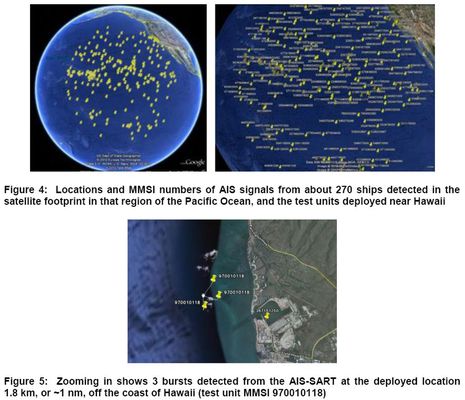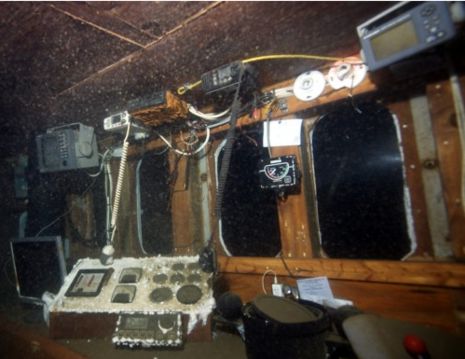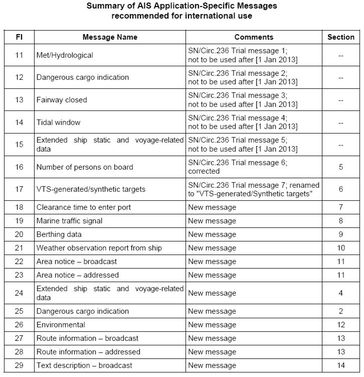AIS: Global SART detection, ASM info, & a bummer

While exciting things are happening on the frontiers of AIS, there's still some tragic ignorance about what the technology can do right now for marine safety, even from folks who should know better. But let's start with the good stuff, right? After a recent entry about using compact AIS SARTS as crew overboard devices, USCG analyst Jorge Arroyo bombed me with documents about this and other AIS developments. I was aware that AIS SARTS have done well in testing with ships, planes, and helicopters, and I also knew that certain satellites were able to receive AIS signals, but -- Holy Sardine, Batman! -- who knew that there were "microsatellites" that can pick up a 1 Watt SART attached to a floating life vest from 1,100 miles away?...
You can download the test report PDF here, and learn more about the sat system developer exactEarth here. You'll see that their focus is monitoring regular AIS traffic (hopefully for a large number of commercial and governmental subscribers), and that the system is far from complete. And while there may never be enough microsats buzzing around to keep timely watch on AIS SARTS everywhere, just the fact that it's possible boosts the technology in my view (though of course I'd still like to see how well a waterborne SART works when you're trying to plot it from a small vessel in big seas).Unfortunately, though, the many uses of AIS can lead to confusion, which brings me to the "bummer" part of this entry...
But I did take the opportunity at the end to ask if there was any news about the expanded AIS carriage requirements that have been in the works for almost two years, and include over 5,000 fishing boats over 65'. First one USCG presenter told me that fishing vessels were exempt from AIS with no changes planned. Then someone in the audience who had apparently represented Maine fishermen in AIS talks sometime in the past told me that the industry stance was that vessels which already had Vessel Monitoring Systems should not be required to install a duplicate identity system. When I said -- nicely, I think -- that VMS didn't do any good for collision avoidance, the other USCG representative said in no uncertain terms that "AIS is more of a Homeland Security instrument than a navigation safety instrument." When I brought up the IMO and all those ships going around the world with AIS -- still nicely, I think -- he boomed out "I don't care what people have told you, AIS is the result of Homeland Security." Yike!
It's understandable why fishermen, and most all industries, are defensive about government mandated equipment. And while the Department of Homeland Security certainly didn't invent AIS, it does value the technology for coastal security as well as collision avoidance, which may be confusing. But I'm pretty sure that the job description of the man so misinformed about AIS includes advising fishermen about safety issues. And I'm not sure he has a clue that there are such men who might be alive today if they had adopted AIS, like the crew of the Lady Mary, which just doesn't seem right.



 Share
Share
Exciting those extensions to AIS usage. But the more other uses for AIS there are, the more data traffic there will be. Already now we are fearing that class B AIS is being suppressed because of insufficient bandwidth - what's gonna happen if class A starts using AIS' precious bandwidth for other stuff than its primary purpose?